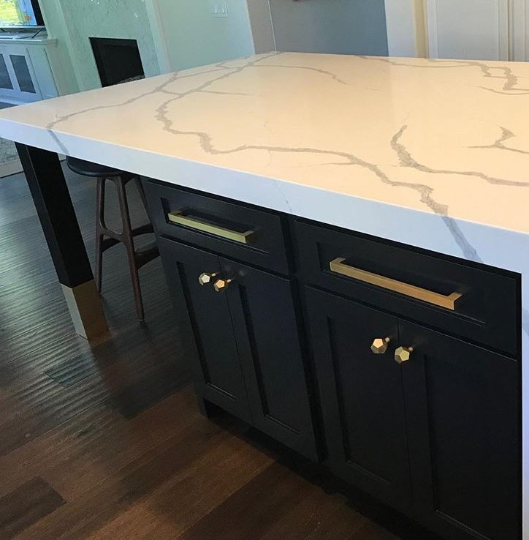Crucial Aspects to Think About When Picking Legs For Kitchen Area Island
Picking the ideal legs for a cooking area island includes a careful analysis of numerous elements that can considerably influence both capability and aesthetic appeal. Amongst these, the option of material plays a crucial function in guaranteeing resilience, while the layout needs to complement the existing style. Factors to consider such as height and weight assistance are vital for security and comfort. As we discover these aspects, it becomes clear that each choice can have far-reaching ramifications for the overall cooking area experience. What nuances should be thought about in each of these categories to accomplish the perfect equilibrium?
Product Options
When selecting legs for a kitchen area island, recognizing the numerous material choices is crucial for achieving both aesthetic charm and architectural honesty (Legs For Kitchen Island). The choice of material considerably affects not just the durability of the island however likewise its general layout and capability
Wood is a popular option, using heat and convenience. Strong woods, such as oak or maple, provide strength and can be stained or painted to match the kitchen area design. Metal legs, commonly made from stainless-steel or functioned iron, add a modern-day and commercial feeling while making certain durability and security. These products are immune to put on and can sustain significant weight, making them excellent for bigger islands.
One more choice is engineered products, like MDF or plywood, which can be extra economical while still using a variety of finishes. Nonetheless, they might not offer the same degree of stability as solid timber or metal. Materials such as acrylic or glass can develop a modern look, though they might require added support to ensure security.
Ultimately, the choice of material for cooking area island legs ought to straighten with the preferred functionality and the general theme of the kitchen area.
Design And Style

When considering style, the shape and finish of the legs are critical. Tapered legs can provide a feeling of agility and style, while thicker, extra durable legs can share stamina and stability. Additionally, the finish-- be it painted, tarnished, or all-natural-- must match the cabinets and countertop materials to develop a unified appearance.
Additionally, the style of the legs can also mirror individual taste. Customized or attractive legs, such as those including complex carvings or unique geometric forms, can offer as prime focus, adding personality and character to the kitchen. Inevitably, the ideal option will not just improve capability however also boost the visual appeal, making the cooking area island a standout function of the home.
Height Factors To Consider
Choosing the proper height for kitchen area island legs is critical, as it directly affects both capability and comfort. The conventional elevation for a kitchen island normally varies from 36 to 42 inches, aligning with typical kitchen counter elevations.

It is additionally important to account for customers' heights and preferences. Tailoring the height can make certain a comfortable experience for all member of the family, making the kitchen island a much more enjoyable and useful area.
Weight Assistance
Guaranteeing adequate weight support for cooking area island legs is important for both safety and security and performance. The cooking area island typically offers multiple objectives, including cooking, eating, and additional storage space, demanding a robust assistance framework. When selecting legs, it is vital to consider the general weight ability called for based on the island's planned usage and the products that will be put on it.
The selection of material for the legs plays a considerable function in their weight-bearing abilities. Strong wood, metal, and durable compounds read generally offer premium strength compared to lighter materials. Furthermore, the layout of the legs-- whether they are straight, tapered, or have a pedestal form-- can influence their capability to disperse weight properly across the structure.
Furthermore, the leg positioning should be strategically prepared to improve security. Legs placed at the edges or with a bigger base can much better sustain heavier loads. Always seek advice from the supplier's requirements regarding load limits to ensure that the legs can sustain the intended weight without compromising safety. In summary, selecting kitchen island legs with adequate weight support is important for creating a safe and functional cooking room.
Installment and Upkeep
Appropriate installation and maintenance of cooking area island legs are important for ensuring durability and stability. This typically involves protecting the legs to the island base making use of suitable bolts, ensuring that the legs are degree and straightened.
Once mounted, regular maintenance is essential to preserve the stability and look of the legs - Legs For Kitchen Island. For wooden legs, regular cleansing with a wet cloth and application of appropriate timber gloss can prevent wetness damages and maintain their finish. Metal legs might call for a gentle cleaning option to get rid of grease and grime, complied with by a completely dry towel to avoid rust development
In addition, inspect the legs frequently for indications of wear or damages, such as fractures or loosened joints. Tightening up screws or bolts as needed can likewise extend the life-span of the legs. By sticking to these installment and maintenance techniques, property owners can make certain that their kitchen area island stays strong and visually appealing for many years to find.
Conclusion

Aesthetic coherence is critical in choosing the design and layout of legs for a cooking area island, as these elements i loved this significantly influence the general atmosphere of the space. Conical legs can provide a feeling of agility and style, while thicker, extra durable legs can convey strength and security.Picking the appropriate elevation for cooking area island legs is crucial, as it directly impacts both functionality and convenience. In recap, picking cooking area island legs with ample weight assistance is necessary for producing a risk-free and practical culinary space.
In verdict, picking legs for a cooking area island requires cautious consideration of various variables, consisting of material options, design, elevation, weight support, and installation.